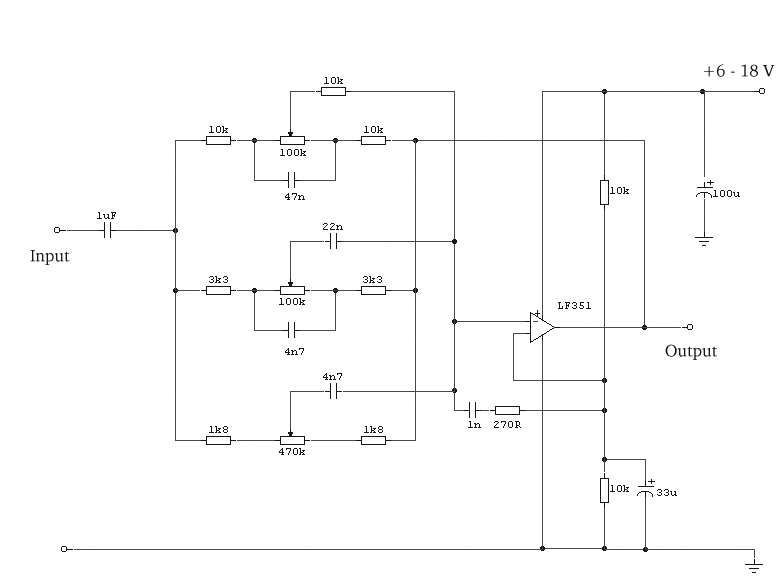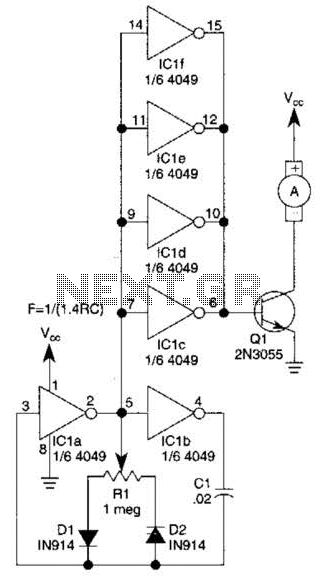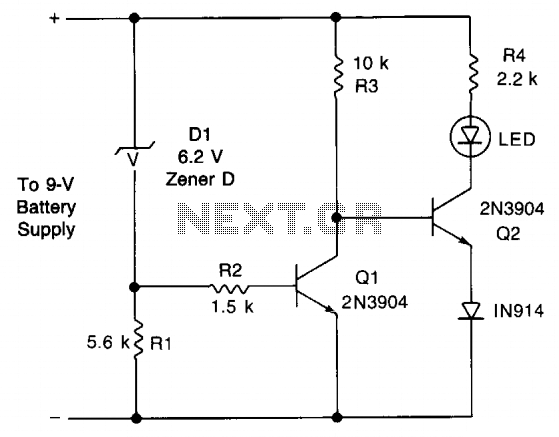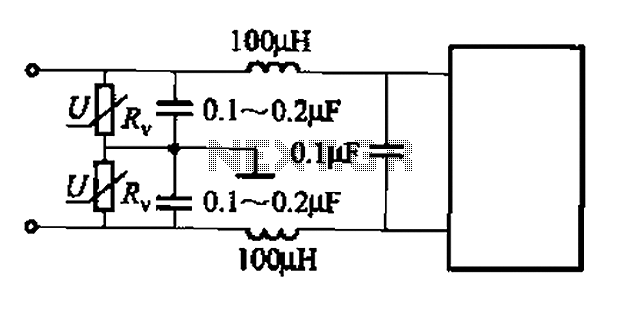
Atv Jr Transmitter 440Mhz Circuit
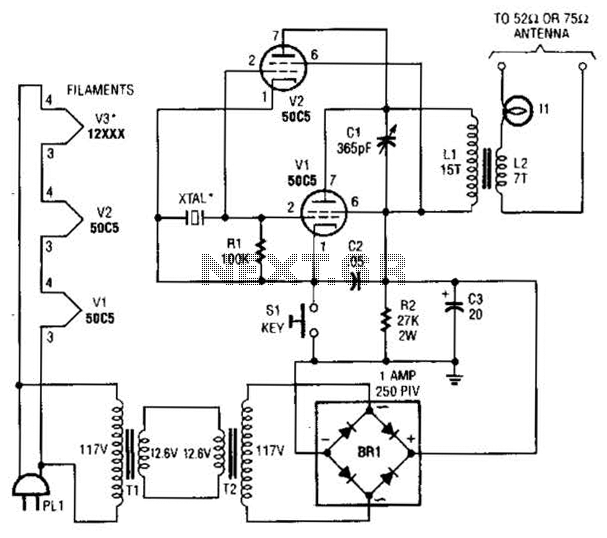
This low-power video transmitter is designed for remote control (R/C) applications, surveillance, or amateur radio purposes. It utilizes seven transistors within a crystal oscillator-multiplier RF power amplifier chain, along with a high-level video modulator. A supply voltage of 9 to 14 VDC is required. The output power ranges from 0.4 to 1.2 W, contingent upon the supply voltage.
The low-power video transmitter circuit operates effectively in various applications, leveraging a combination of RF amplification and video modulation techniques. The core of the transmitter is built around a crystal oscillator that provides a stable frequency reference. This oscillator is followed by a multiplier stage, which increases the frequency to the desired transmission band.
The RF power amplifier stage, consisting of multiple transistors, is responsible for boosting the signal strength to ensure reliable transmission over longer distances. The choice of seven transistors allows for a balance between power efficiency and output performance, facilitating a maximum output power that varies between 0.4 to 1.2 W based on the input supply voltage. This flexibility in output power is particularly advantageous for applications requiring different transmission ranges.
The high-level video modulator integrates the video signal with the RF carrier wave, allowing for the transmission of video content alongside the RF signal. The modulator ensures that the video information is encoded effectively, maintaining high fidelity and clarity of the transmitted video signal.
The circuit requires a DC power supply within the range of 9 to 14 V, which is essential for the proper operation of the transistors and the overall functionality of the transmitter. Proper power management and heat dissipation techniques should be considered in the design to ensure reliable operation over extended periods.
In summary, this low-power video transmitter is a versatile solution for various applications, providing a reliable means of transmitting video signals wirelessly with adjustable power output based on supply voltage. Its design incorporates essential components that ensure stable operation and high-quality video transmission. This low-power video transmitter is useful for R/C applications, surveillance, or amateur radio applications. Seven transistors are used in a crystal oscillator-multiplier RF power amplifier chain, and a high-level video modulator.
A 9- to 14-Vdc supply is required. Output is 0.4 to 1.2 W, depending on supply voltage.
The low-power video transmitter circuit operates effectively in various applications, leveraging a combination of RF amplification and video modulation techniques. The core of the transmitter is built around a crystal oscillator that provides a stable frequency reference. This oscillator is followed by a multiplier stage, which increases the frequency to the desired transmission band.
The RF power amplifier stage, consisting of multiple transistors, is responsible for boosting the signal strength to ensure reliable transmission over longer distances. The choice of seven transistors allows for a balance between power efficiency and output performance, facilitating a maximum output power that varies between 0.4 to 1.2 W based on the input supply voltage. This flexibility in output power is particularly advantageous for applications requiring different transmission ranges.
The high-level video modulator integrates the video signal with the RF carrier wave, allowing for the transmission of video content alongside the RF signal. The modulator ensures that the video information is encoded effectively, maintaining high fidelity and clarity of the transmitted video signal.
The circuit requires a DC power supply within the range of 9 to 14 V, which is essential for the proper operation of the transistors and the overall functionality of the transmitter. Proper power management and heat dissipation techniques should be considered in the design to ensure reliable operation over extended periods.
In summary, this low-power video transmitter is a versatile solution for various applications, providing a reliable means of transmitting video signals wirelessly with adjustable power output based on supply voltage. Its design incorporates essential components that ensure stable operation and high-quality video transmission. This low-power video transmitter is useful for R/C applications, surveillance, or amateur radio applications. Seven transistors are used in a crystal oscillator-multiplier RF power amplifier chain, and a high-level video modulator.
A 9- to 14-Vdc supply is required. Output is 0.4 to 1.2 W, depending on supply voltage.
